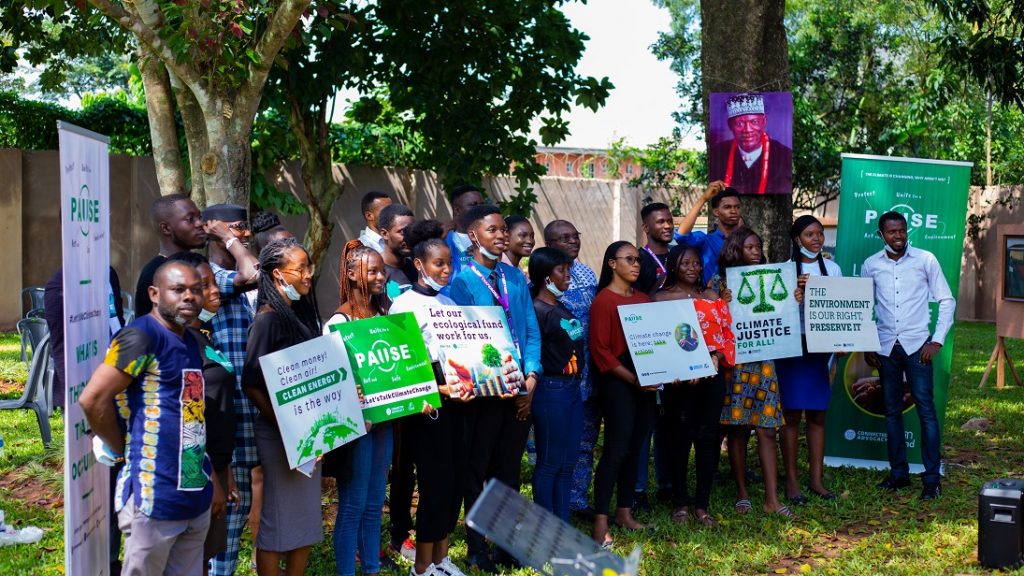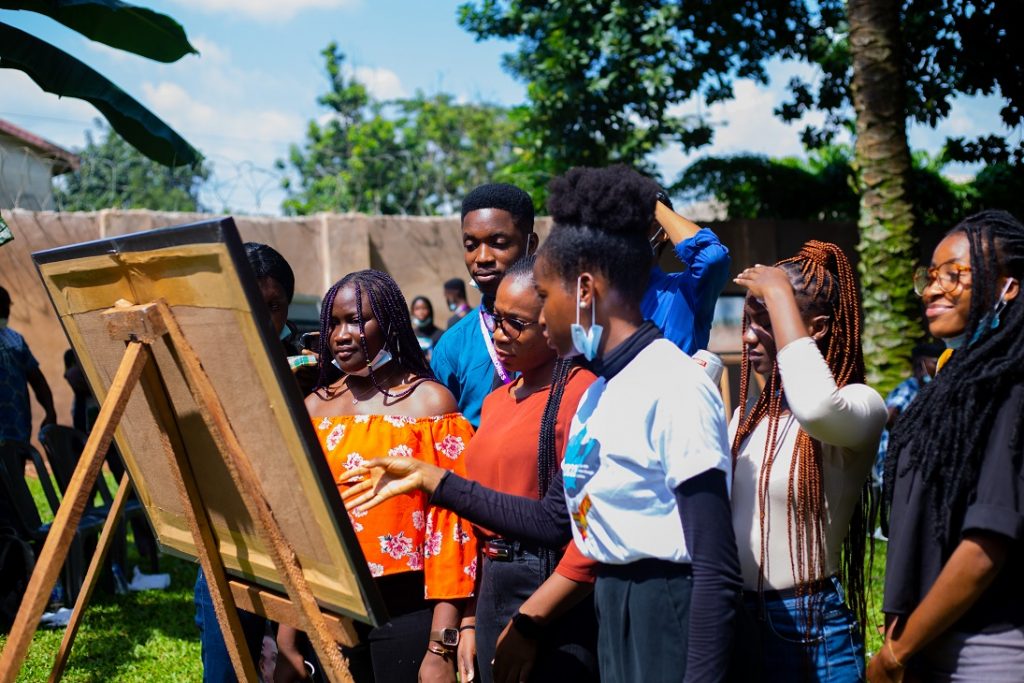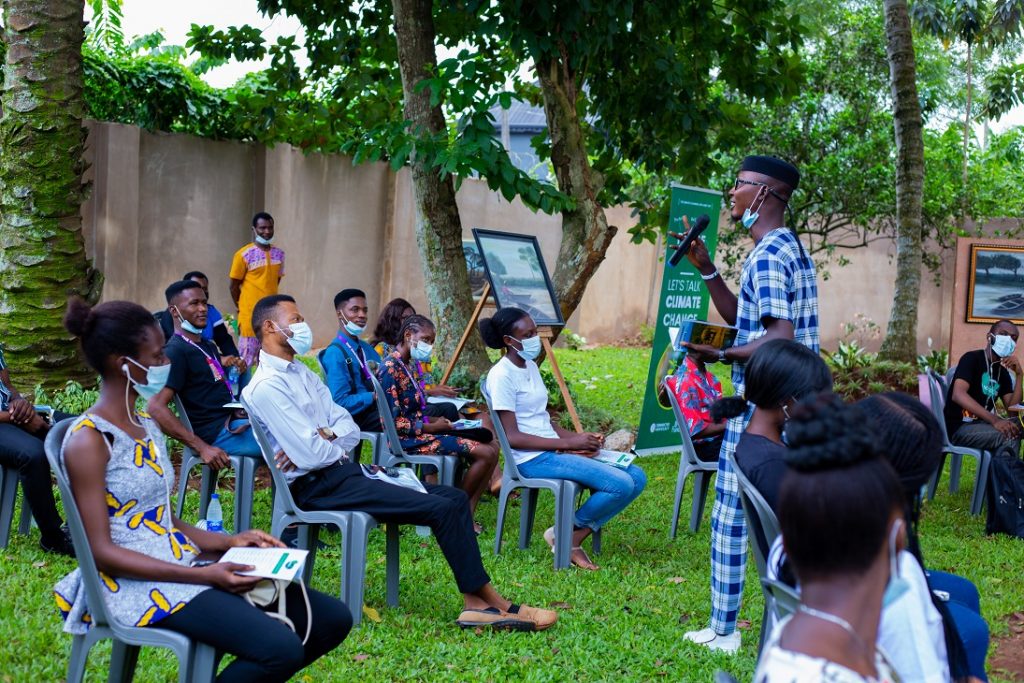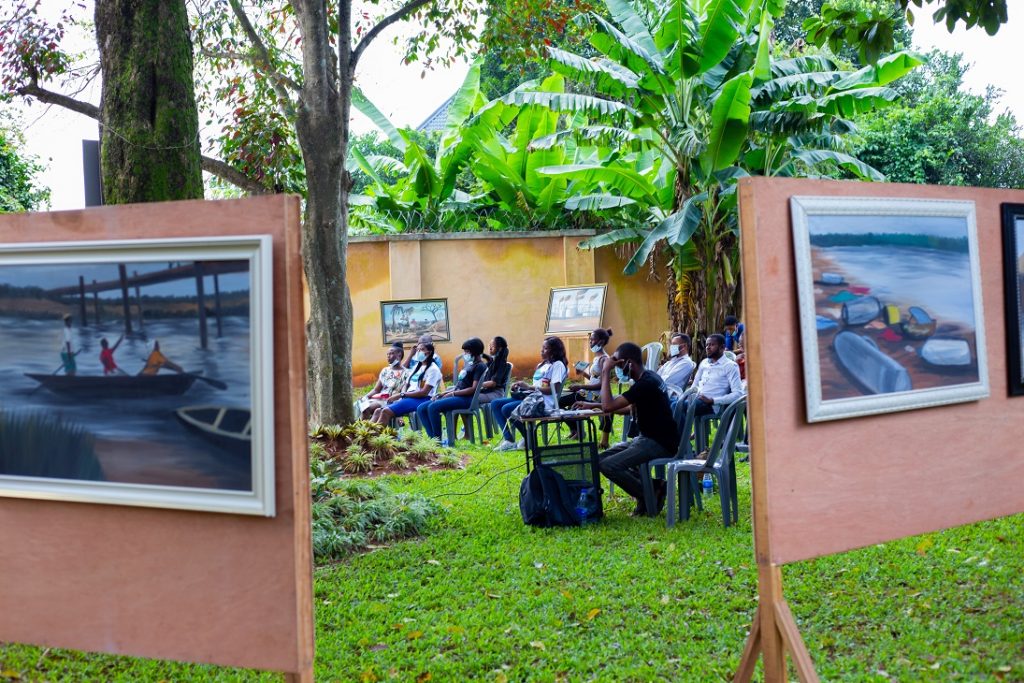Friday 8th October, Benin City played host to the first Niger Delta Climate Change Exhibition―an art exhibition that utilizes visual content (pictures, paintings, and video) to bring to the forefront of the public challenges communities and individuals face as a result of climate change across Niger Delta communities. This event was put together by Connected Advocacy for Empowerment and Youth Development to showcase findings gathered from local communities in Bayelsa, Delta, Edo, and Rivers state.
In his opening remark, the Executive Director of Connected Advocacy Prince Israel Orekha gave an overview of what the exhibition represents and what his team intend to achieve. In his words, “The artworks here represent the situation and community reports we got from across the Niger Delta on how climate change affects us. These artworks were done by us and we are using them to tell the story of climate change. We want these stories to be readily available in the hands of the youth, policymakers and the public―we believe this will help us all see the need to take urgent steps against climate change.”

He rounded off by calling on the participants to action: “Climate change is here―we want citizens and policymakers to begin to take mitigative actions to tackle climate change. One man or group can not do it alone; together we can make a difference”.
The event featured three speakers: Babawale Obayanju, climate justice campaigner and photographer, Isaac Botti, Programme Manager, Social Action Nigeria and Gloria Kasang Bulus, environmentalist and founder, Bridge That Gap Initiative.
Babawale Obayanju spoke on the concept of visualACTIVISM, the art of using what the eyes can see to pass across messages that are of social concern like climate change. He talked about how powerful visuals can be in advocating for people to take action. “A picture is worth a thousand words―a complex idea can be conveyed with just a single still image/a short film, making it possible to absorb large amounts of information quickly. Especially in an era where people have become too lazy to read, and pay attention, we would need to devise other methods of passing our message.”
Quoting Olafur Eliasson, he said: “’Art (still or motion picture) does not show people what to do, yet engaging with a good work of art can connect your senses, body, and mind with the message it can make the world felt. And this felt feeling may spur think engagement, and even action.’ The tool of art is a tool we all need to embrace and begin to use in our fight for climate justice. We want people to see these forms of art and have a rethink of how they treat their environment.”

In communicating climate messages, Babawale indulged the participants to understand that they are dealing with people and to communicate their messages to people they have to think like a person; putting human issues at the fore―being empathetic and humanizing the narrative. He made it known that it is also important to understand that images (artworks) aren’t the struggle or the solution but they are part of it. “Art/photographs didn’t end slavery, apartheid, or mercury poisoning. It didn’t get women the vote and they didn’t end the Vietnam War―it only played a part in all these things and helped crystallize political change further down the line.”
“There is a need to make our messages strong enough so that others who see these messages will empathize with us and take action. Therefore, there is a need to capture moments, look for something different from what everyone else is doing about the issues that seem more emotionally attached to what is going on.”
Citing how art has helped bring about change, the speaker referred to Lewis Hine’s images and stories that helped to stop child labour in the US in the 1940s; Marina Debris, an Australian artist using art to highlight effects on the beach cleanup and for creating fashion outfits from ocean pollution. He concluded by saying: “Our art forms are very powerful tools that we must embrace at every point in time, in solidarity and hope we’d get the victory we desire in the future.”
Isaac Botti addressed the topic, “How Strong Institutions Can Enhance Mitigative Action for Climate Change.” He pointed out that to successfully address climate change issues, mitigation is very important; a key thing that can drive the process of mitigative action for the impact of climate change are vibrant institutions. “When policies are developed and frameworks are established in managing certain social situations like climate change, there is a need to support this effort with concrete and effective institutions to drive the process.”
The process of implementing mitigative strategies recommended by various stakeholders requires a thorough level of accountability. And there should be a system to monitor climate funds and curb the issues of corruption in the sector. “Nigeria has fantastic policies/frameworks on the issues of climate change but do we have the system to ensure sustained actions are effectively implemented? We need to look inward and identify institutional gaps that exist so we can properly advocate for change.”
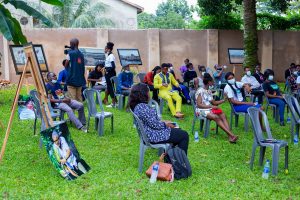

Speaking on “Community Organizing for Mitigation Climate Actions”, Gloria Bulus defined a community as a group of people not only living in the same place but also having a shared interest even if they are in different geographic locations. She spoke about community organizing, a vital tool to engage and empower people with the purpose of increasing the influence of groups historically underrepresented in policies and decision making that affect their lives.
“To have a successful community organizing, there has to be unity―we have to work together in our various communities. There is a skill gap in our communities; we need to strengthen community power by building relationships, building our capacity, develop leadership skills and collectively carry out community action in the fight against climate change. The community must take ownership of whatever you are doing in a community.”
“It is not enough to observe, witness and wail; we must also act. We must up our action; actions that are result driven and now is the time for action whether it’s small or big. The benefits of organizing our communities for climate action are numerous and cut across three sectors: environmental, economic and social. We would have a better environment, climate-friendly smart cities, green job opportunities and improved livelihood.”
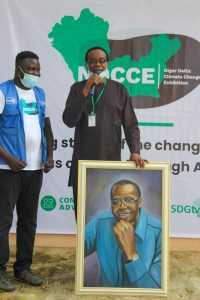
In his goodwill remark, Nnimmo Bassey, environmental activist and founder of Health of Mother Earth Foundation (HOMEF) welcomed the participants and encouraged them to learn, to question and to take actions that will help mitigate the impact of global warming. “Engage in the political analysis of climate change―understanding the things that brought us to this problem and how to overturn it,” he said. “This meeting is about your life, it is about your future, it is an intergenerational exercise. Fighting global warming is about the future and the future is today. I want to call on you to dream of the future you want for yourself and your children and begin to build the pathway towards that future.” He commended Connected Advocacy for their works in the climate space as one group with the passion, vision and belief in the right ideals to push forward for a better environment and society.
The event was mainly attended by youth and also featured poetry sessions, social and climate interactive sessions and a walkthrough of the art pieces on display, learning about the stories that inspired them. The exhibition came to a close with a vote of thanks messages from Kenneth Uwoghirien, Director of the Department of Climate Change, Edo State Ministry of Environment and Sustainability and Mercy Agbede, Project Coordinator of the Niger Delta Climate Change Exhibition.
More event photos
